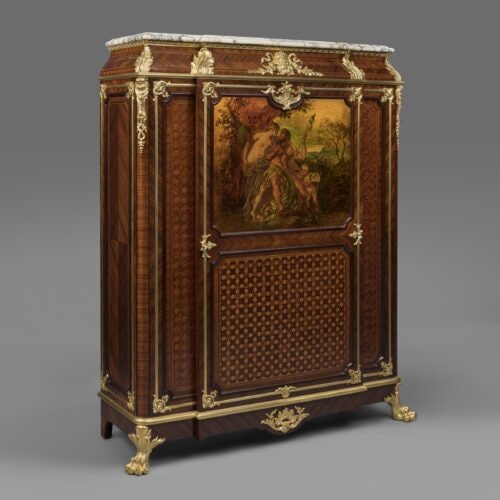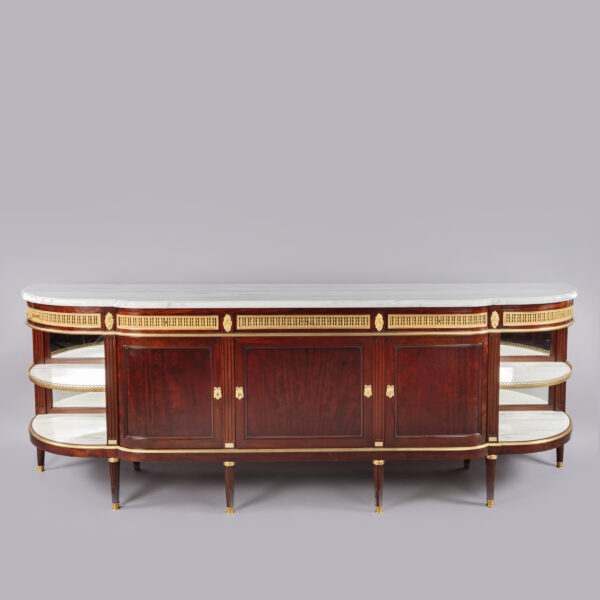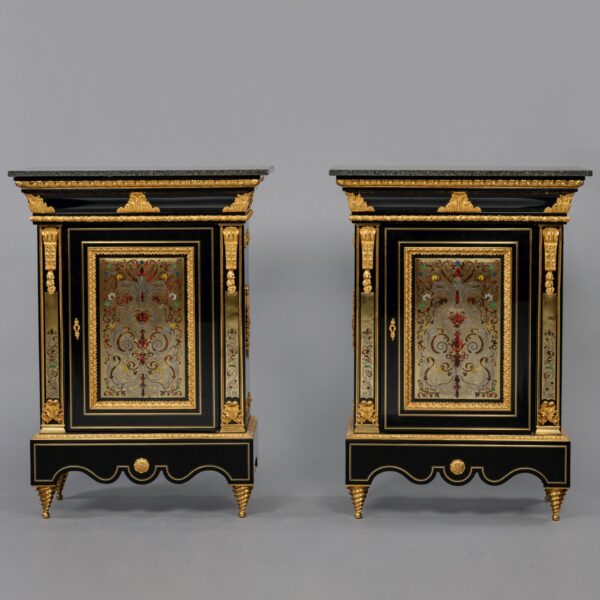François Linke
A Very Fine Louis XVI Style Gilt-Bronze Mounted Marquetry Commode
£85,000
A Very Fine Louis XVI Style Gilt-Bronze Mounted Marquetry Commode after a model by Jean Henri Riesener, By François Linke. Linke Index No. 10. Signed...
Dimensiones
Height: 94 cm (38 in)Width: 167 cm (66 in)
Depth: 65 cm (26 in)
Descripción
A Very Fine Louis XVI Style Gilt-Bronze Mounted Marquetry Commode after a model by Jean Henri Riesener, By François Linke.
Linke Index No. 10.
Signed ‘F. Linke’ and the lock-plate stamped ‘CT LINKE SERRURERIE/PARIS’.
This fine mahogany commode has a fleur de pêcher marble top above a breakfront frieze set with three drawers, over a pair of drawers with a unified central panel of floral marquetry and trophies within a gilt-bronze frame, flanked by panels of foliate parquetry. The apron is mounted with finely cast acanthus and the scroll-mounted legs put down on block feet.
A popular model in Linke’s oeuvre, he produced a number of variations in different sizes, under index numbers 10, 104, 886, 1036 and 1437. Index no. 10 at 170 cm wide being identical to the original Reisener model. Linke purchased a set of patterns for this model of commode from the sale of the ébéniste Cueunières workshop in November 1902 for 209 francs (See C. Payne, p. 205-206). The origin of the design is derived from the cabinet work of the renowned eighteenth century ébéniste de Roi, Jean-Henri Riesener, who was responsible for many important contributions to the formation of the Louis XVI style in France.
The distinctive repetition of stylised rosette and interlaced lattice work marquetry on the present example, punctuated by fine floral marquetry panels and gilt-bronze mounts is redolent of some of the most celebrated examples of his oeuvre.
This commode can be related to two notable commodes namely one made for the bedchamber at Versailles of the Comtesse de Provence, latterly in the music room at Hamilton Palace and now at Waddesdon Manor. Another commode providing direct comparison was the example made for Marie-Antoinette in the 1780’s, and also formerly in the collection of the Duke of Hamilton at Hamilton Palace, now in the Frick Collection. Riesener when describing the identical stylised rosette and interlaced lattice work, as appears on this commode, used on the desk for the comte d’Orsay, talks of ‘mosaic’ marquetry in the taste of Boulle’.
This marquetry equivalent of the inlaid brass and tortoiseshell work of Andre Charles Boulle is derived from almost identical patterns used by Boulle on items such as the impressive Four Continents Clock now in the Wallace Collection. Yet this geometrical device and indeed many other Boulle patterns of the time can be related to Japanese and Chinese lacquer work. For instance the designs employed on the Four Continents Clock are virtually identical to that employed on a lacquer cabinet, now in the Wallace Collection, that was produced for the European Market in Kyoto in around 1680. As time progressed the taste for the oriental became more generalised and interpretations became looser and less dependent on specific original sources.
Fecha
Circa 1905
Origen
Francia
Medio
Gilt-Bronze and Marquetry
Firma
Signed 'F. Linke' and the lock-plate stamped 'CT LINKE SERRURERIE/PARIS'.
François Linke (1855 - 1946) fue el ebanista parisino más importante de finales del siglo XIX y principios del XX, y posiblemente el más cotizado de su época.
Nació en 1855 en el pequeño pueblo de Pankraz, en la actual República Checa. Los registros indican que Linke realizó un aprendizaje con el maestro ebanista Neumann, y que en 1875, a la edad de 20 años, llegó a París, donde vivió hasta su muerte en 1946.
Se sabe que los incipientes talleres de Linke estaban activos en París, en el Faubourg St. Antoine, ya en 1881, y durante esta época suministraba muebles a otros fabricantes más establecidos, como Jansen y Krieger.
La calidad de la artesanía de Linke no fue superada por ninguno de sus contemporáneos y alcanzó su punto álgido con su espectacular stand en la Exposición Universal de París de 1900, donde su Grand Bureau se llevó la medalla de oro. Apostó su fortuna y su reputación en este stand, exponiendo varios muebles impresionantes con montajes escultóricos de la más excepcional calidad y proporción. Su apuesta funcionó y su reputación se consolidó hasta el punto de que Linke siguió siendo la casa de muebles más importante de París hasta la Segunda Guerra Mundial.
Como informó el Art Journal en 1900 sobre el stand de Linke
La obra del Sr. Linke... fue un ejemplo de lo que se puede hacer buscando la inspiración entre los ejemplos clásicos de Luis XV y XVI sin copiar en gran medida estas grandes obras. La obra de M. Linke era original en el verdadero sentido de la palabra, y como tal se recomendaba al buscador inteligente de las cosas realmente artísticas de la Exposición. Se empleó un maravilloso talento en la realización de los magníficos muebles expuestos....'
La formación del estilo distintivo de Linke fue posible gracias a su colaboración con el escultor Léon Messagé. Juntos, Linke y Messagé diseñaron muebles para el stand de Linke en la exposición de 1900, con exuberantes figuras alegóricas fundidas en altorrelieve, que ejemplificaban la capacidad de Linke para fusionar a la perfección los diferentes medios de la talla en madera, el bronce y la marquetería en un todo dinámico y unificado.
En la actualidad, Linke es más conocido por la excepcional calidad de su trabajo, así como por su individualismo e inventiva. Toda su obra tiene los montajes más finos y lujosos, aplicados muy a menudo a carcasas comparativamente sencillas. La brillantez técnica de su obra y el cambio artístico que representó nunca se repitieron.
Bibliografía:
Payne, Christopher. François Linke, (1855 - 1946), The Belle Époque of French Furniture, Antique Collectors' Club, (Woodbridge, UK), 2003.
Meyer, Jonathan. Great Exhibitions - London, New York, Paris, Philadelphia, 1851-1900, Antique Collectors' Club, (Woodbridge, UK), 2006; pp. 298 - 300.
Ledoux - Lebard, Denise. Les Ébénistes du XIXe siècle, Les Editions de l'Amateur, (París), 1984; pp. 439-43.
Revue Artistique & Industrielle, (París), julio-agosto de 1900.
Coral Thomsen, D. (ed), The Paris Exhibition 1900, The Art Journal, 1901; p.341.
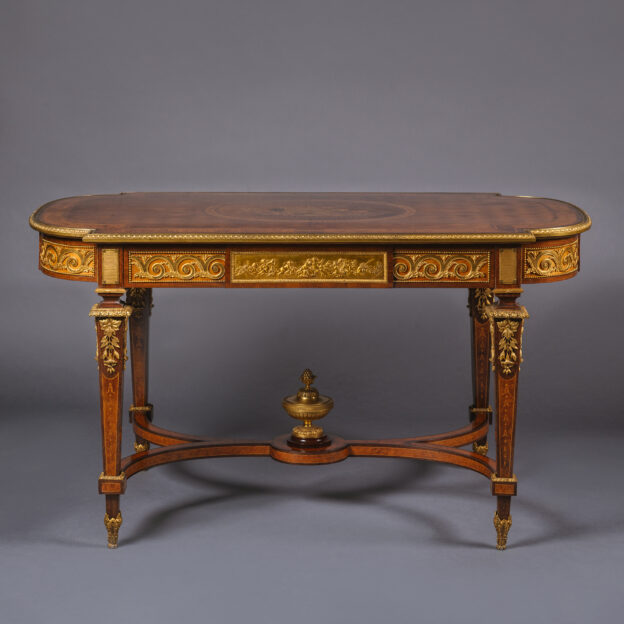




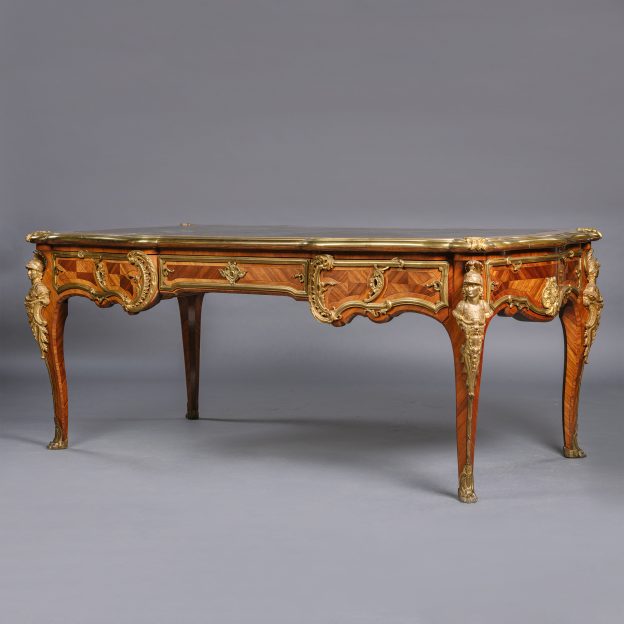
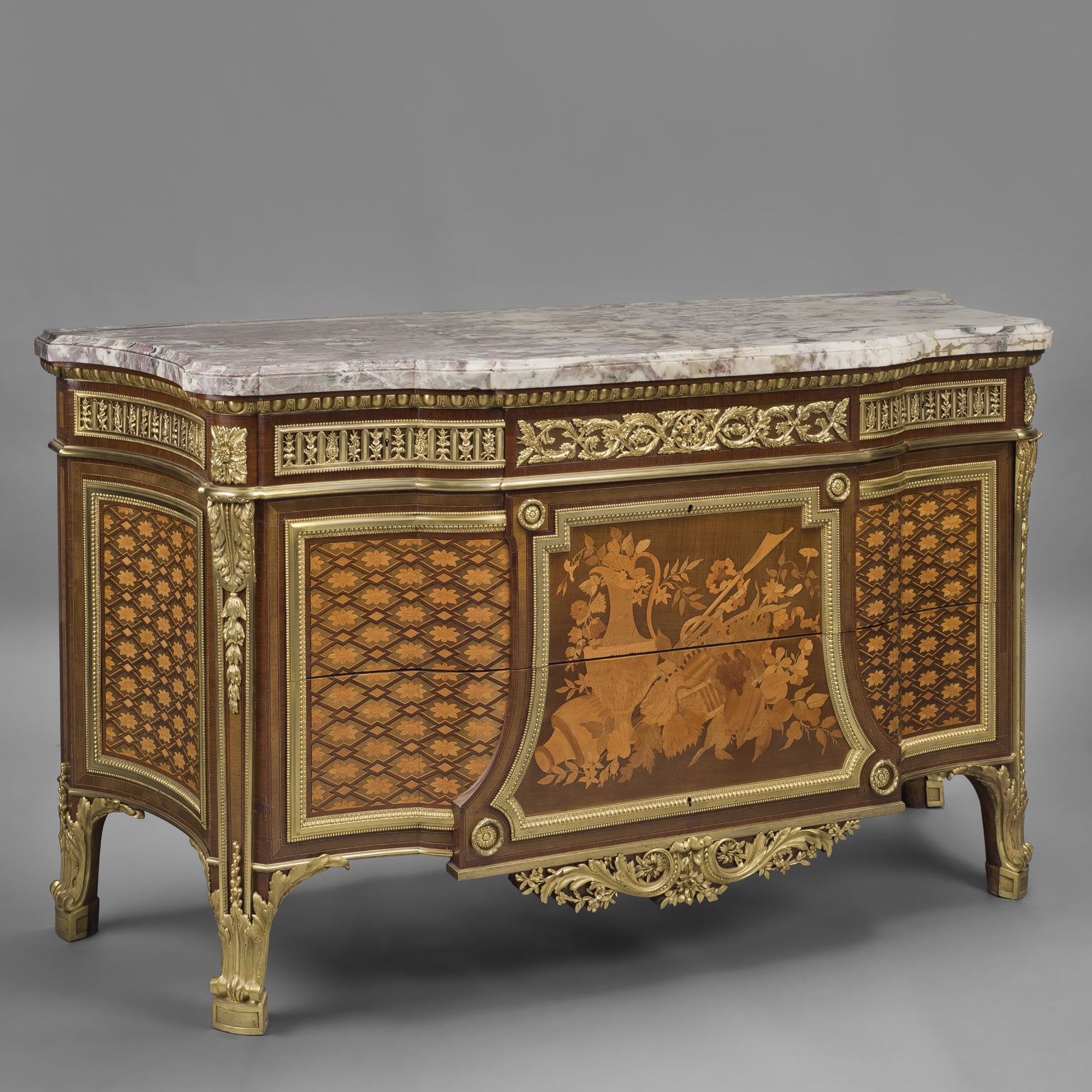

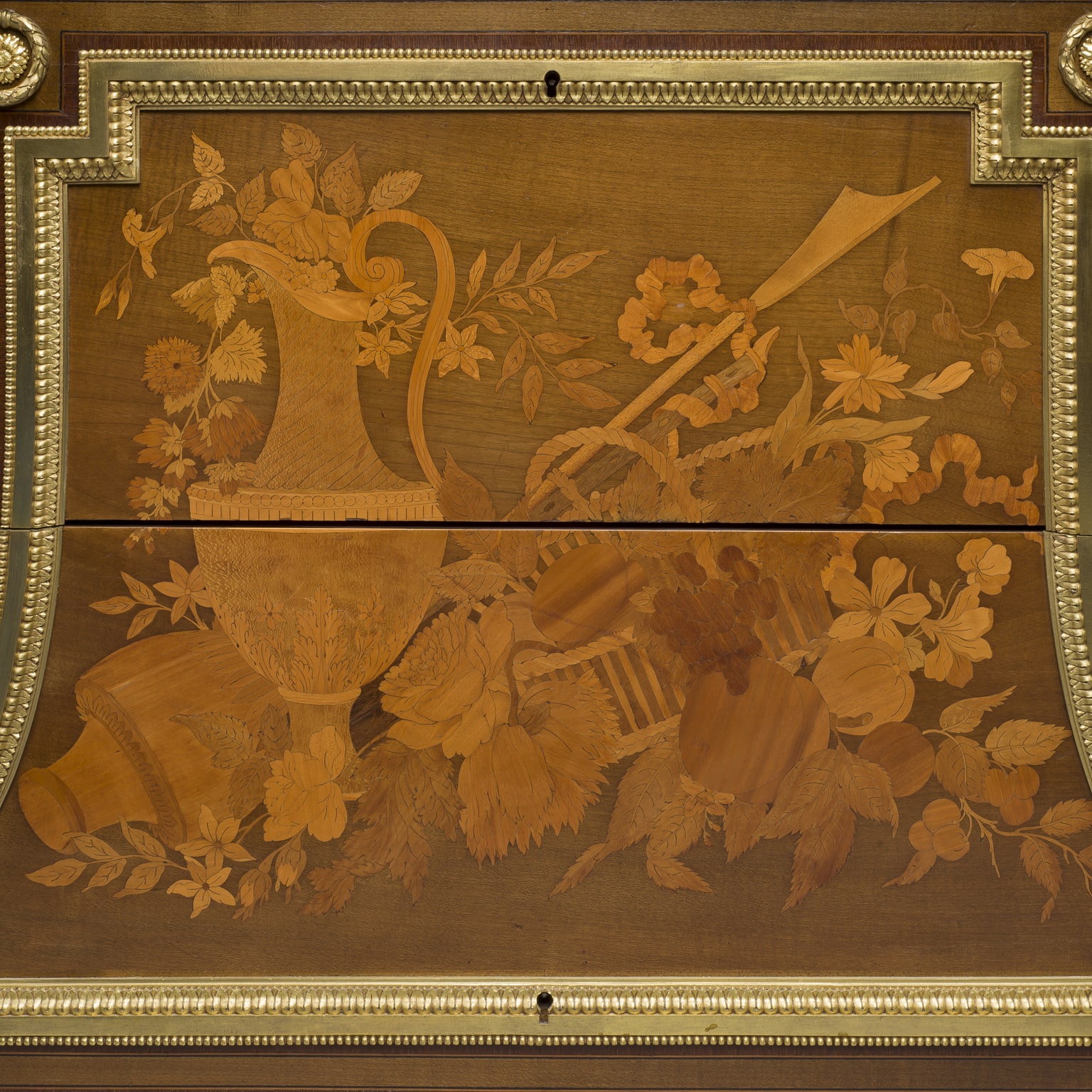
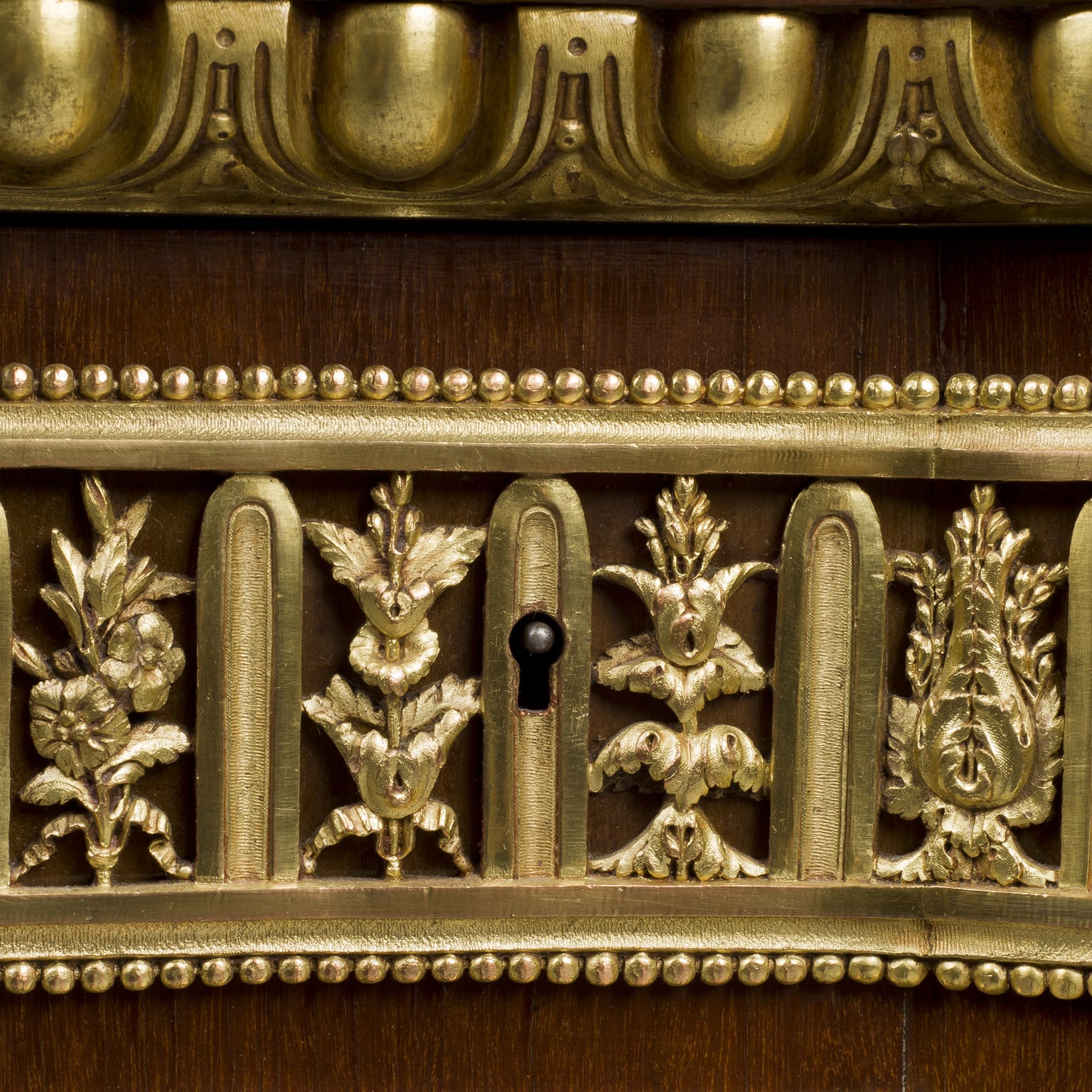
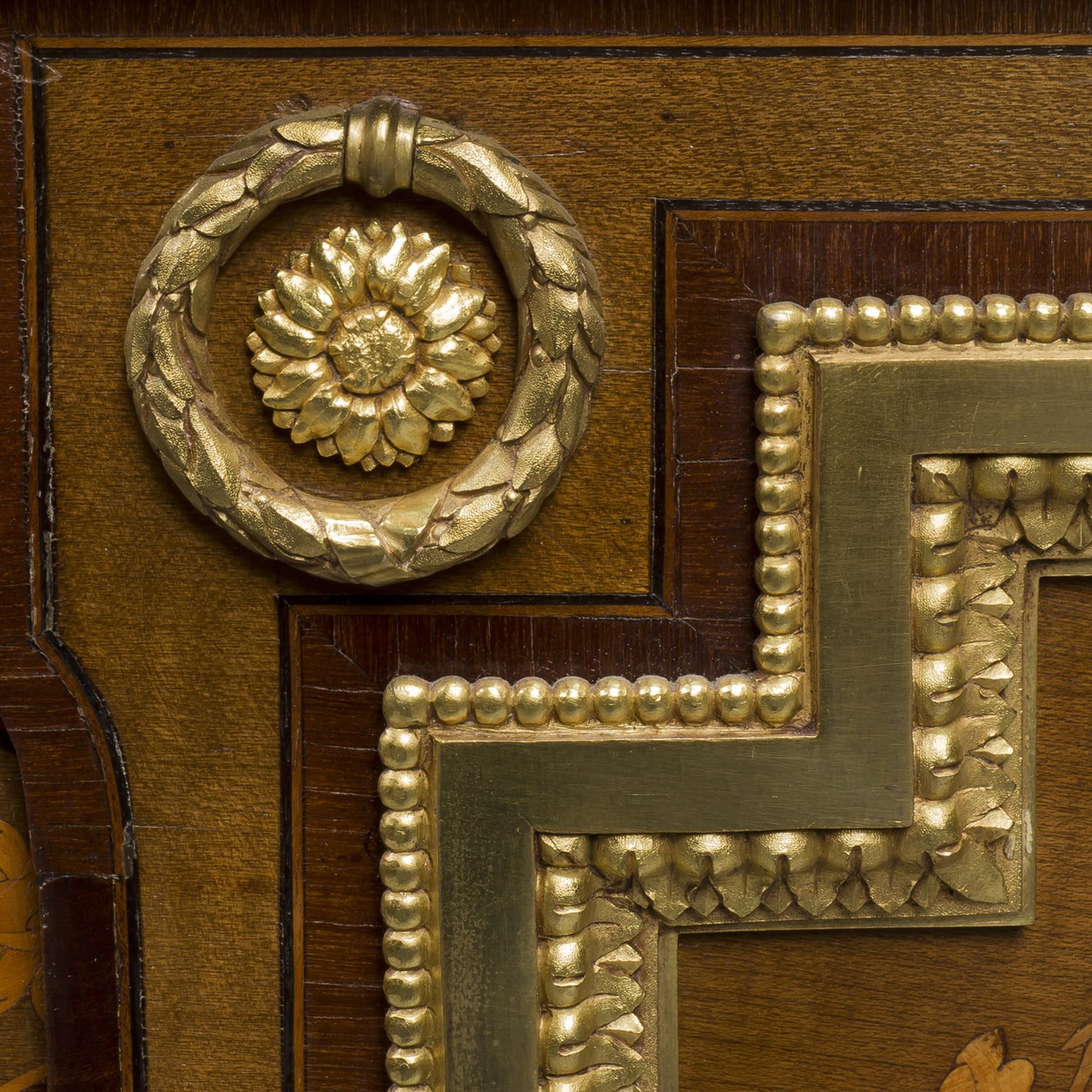
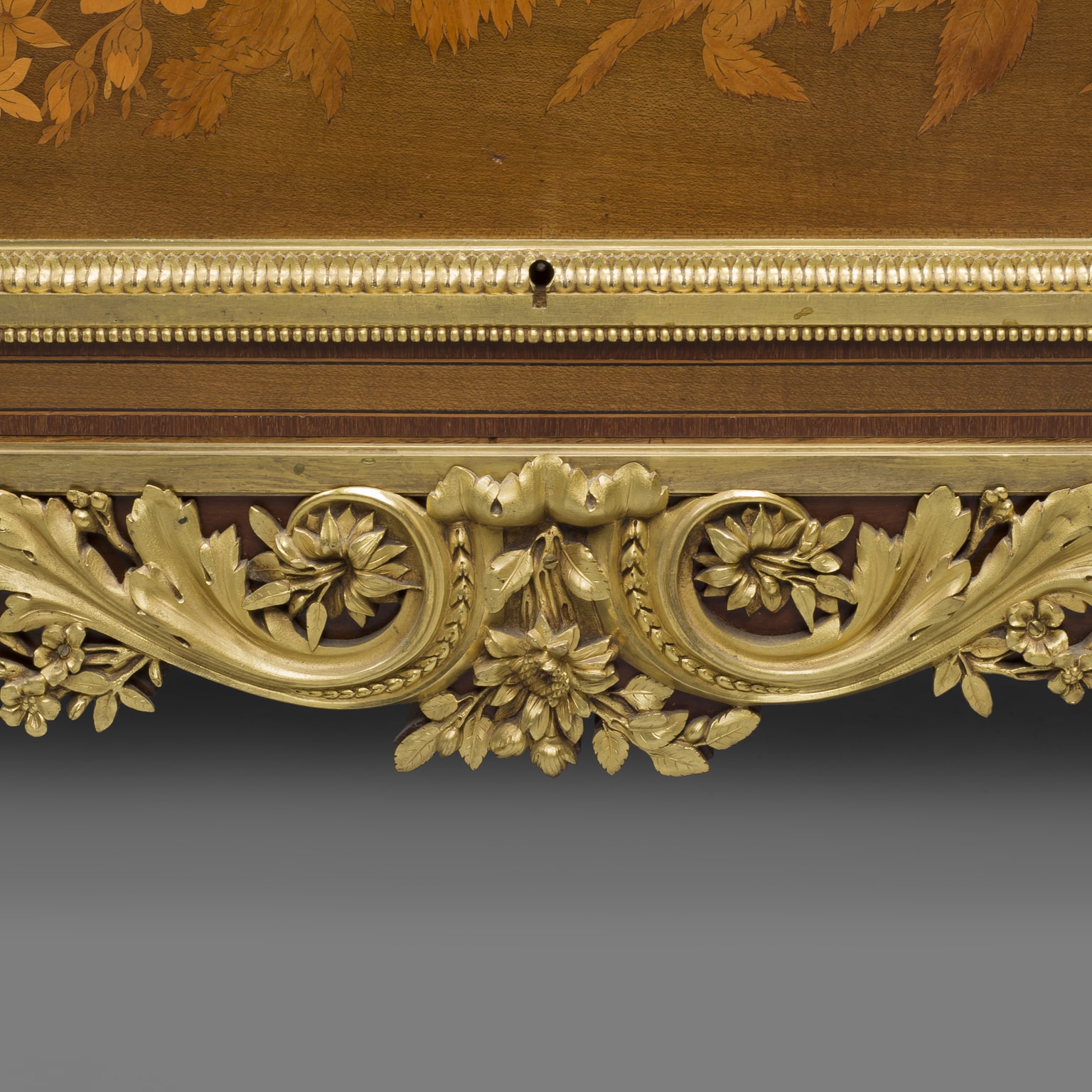
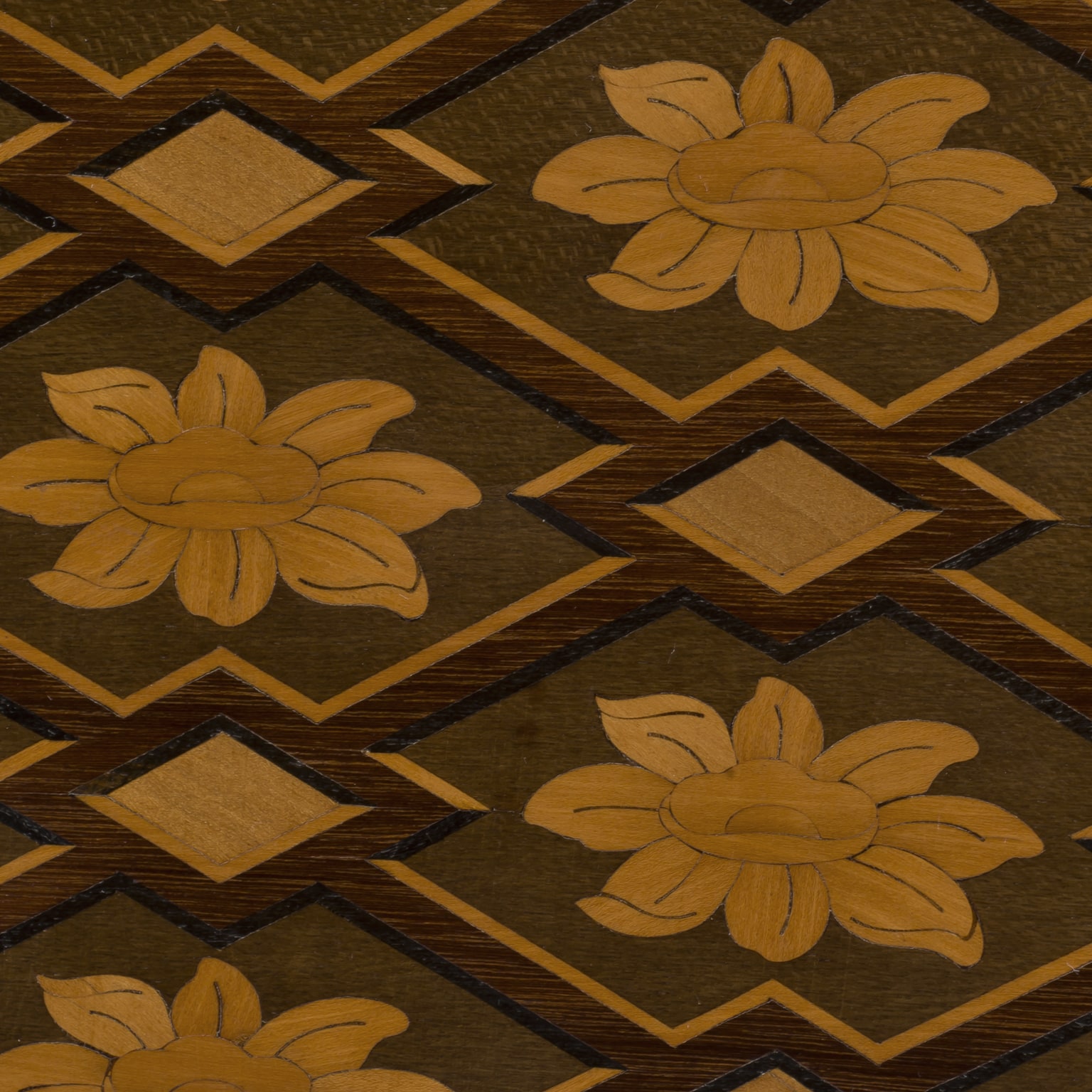
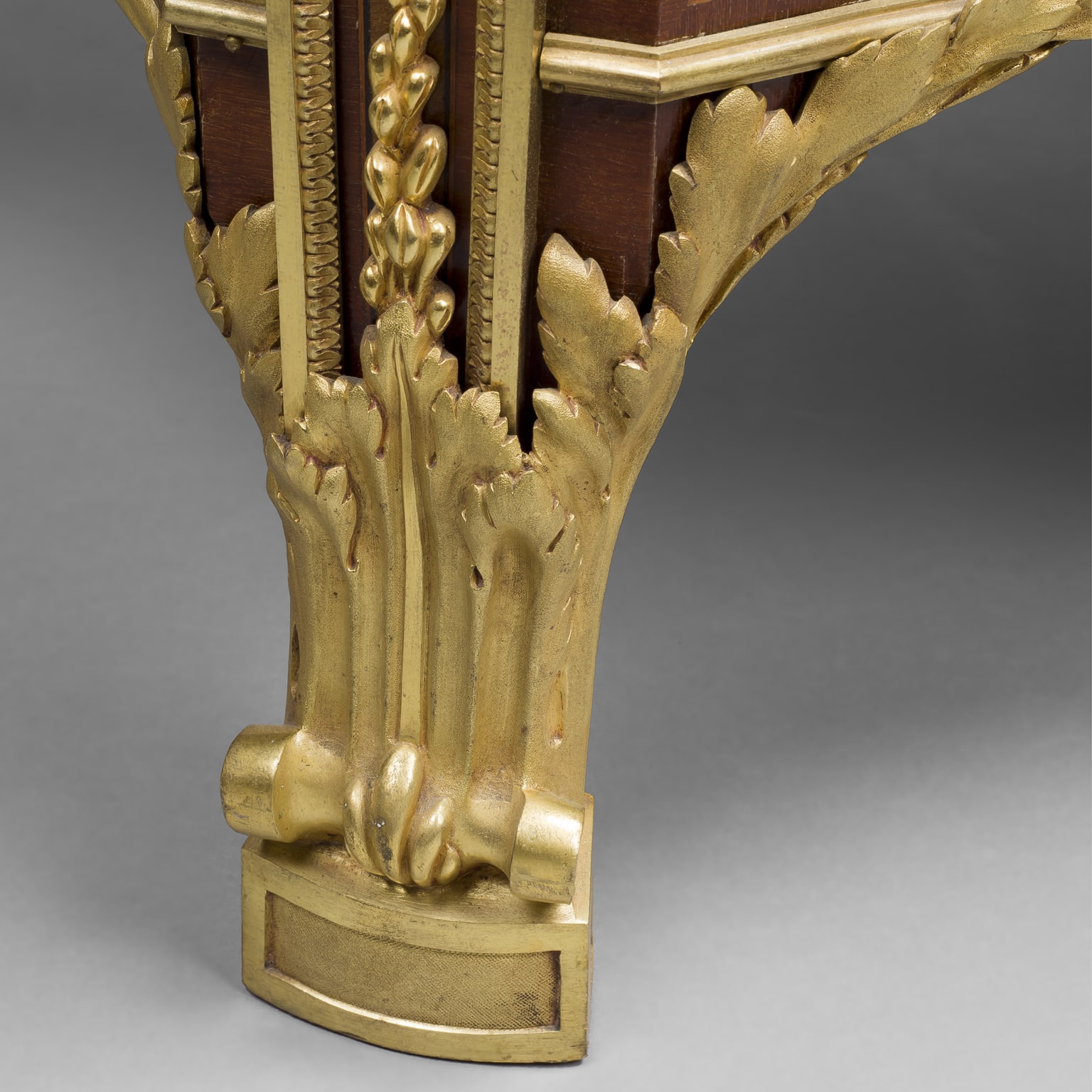

 Imprimir
Imprimir